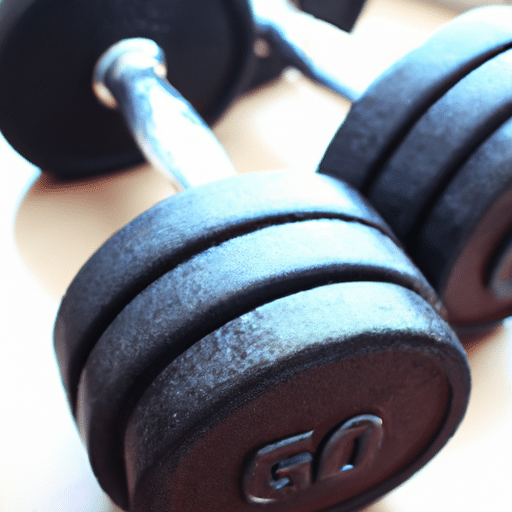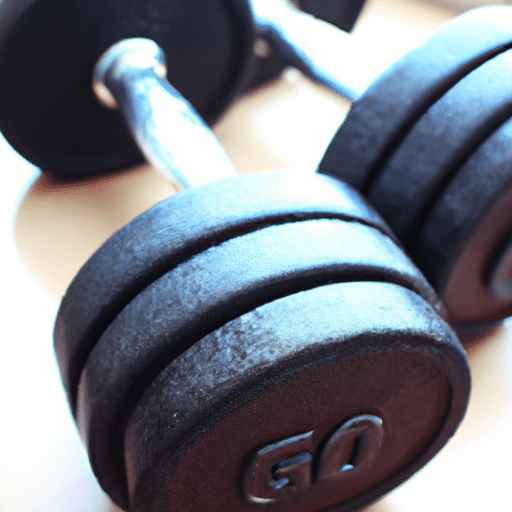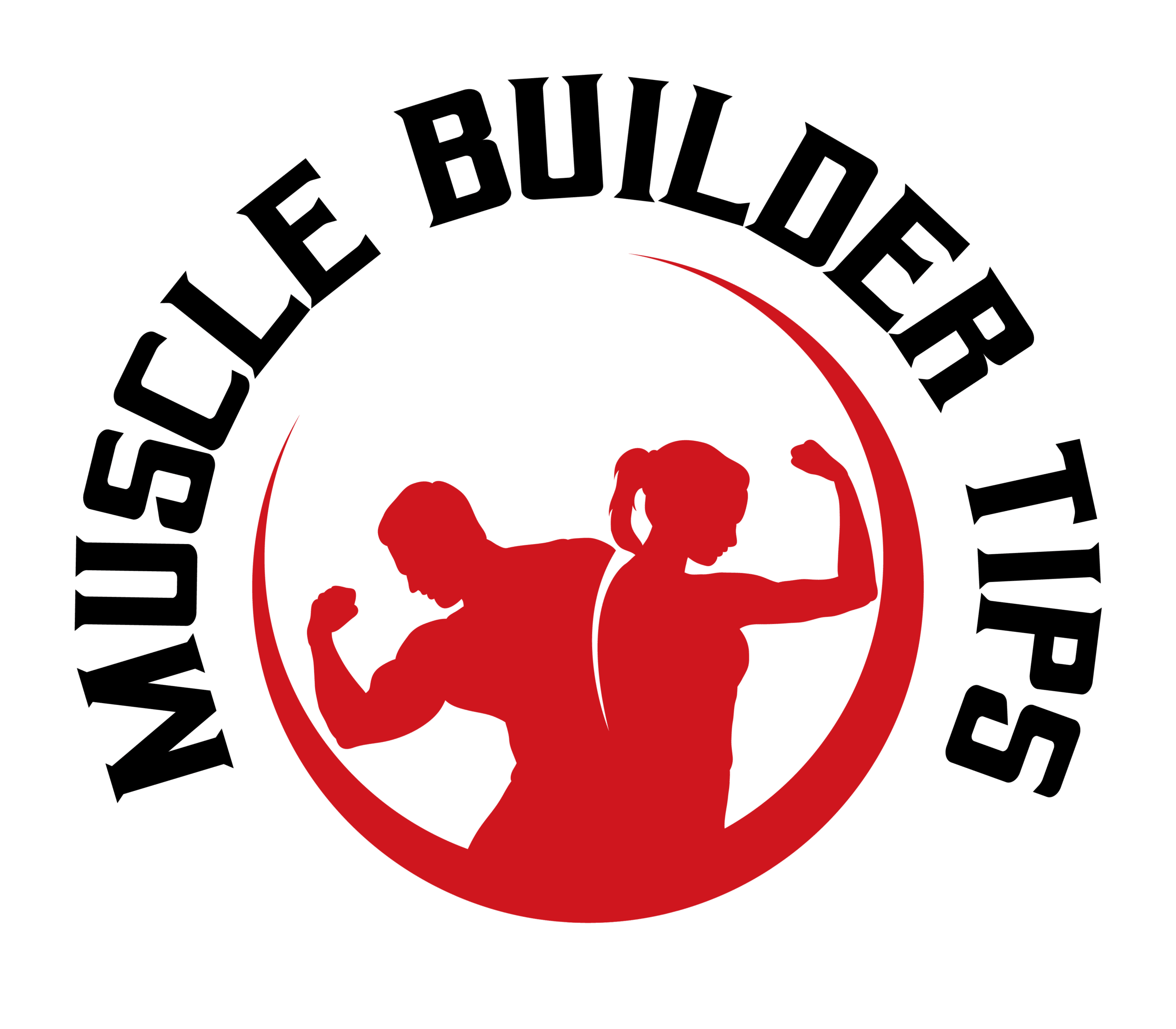
Have you ever wondered how long it takes for females to build muscle? It’s a common question, especially for women who want to tone their bodies and improve their strength. Well, you’re in luck because in this article, we’re going to dive deep into this topic and give you all the information you need. So, grab a cup of coffee, relax, and let’s get started!
Building muscle for females is not an overnight process. It takes time, consistency, and hard work. There is no one-size-fits-all answer to how long it takes because it varies depending on several factors such as genetics, diet, exercise routine, and overall health. On average, it could take anywhere from a few weeks to a few months for noticeable muscle growth. However, it’s important to remember that everyone’s body is different and results may vary. So, don’t get discouraged if you don’t see immediate progress. In the next section, we’ll explore some specific strategies and tips that can help speed up the process and give you those gains you’re looking for. Stay tuned!
How Long Does It Take To Build Muscle For Females
Building muscle is a process that requires dedication, discipline, and perseverance. While many factors can influence the rate at which muscle is built, it is important to understand that muscle building is not an overnight process. It takes time and commitment to achieve the desired results. In this article, we will explore the various factors affecting muscle building for females, the stages of muscle building, the importance of nutrition, effective training techniques, the role of recovery, avoiding common mistakes, incorporating cardio, and the overall timeline to build muscle effectively.

This image is property of pixabay.com.
Factors Affecting Muscle Building for Females
Genetics
Genetics play a significant role in determining each individual’s potential for muscle building. Some individuals may naturally have a higher muscle-building capacity due to their genetic makeup. However, it is important to note that genetics should not discourage anyone from embarking on a muscle-building journey. With the right training and nutrition, individuals can still achieve substantial muscle growth, regardless of their genetic predisposition.
Age
Age is another factor that can impact the rate at which muscle is built. Generally, younger individuals tend to have a faster metabolism and a higher level of natural growth hormones, making it easier for them to build muscle. However, this does not mean that older females cannot build muscle. With proper training and nutrition, individuals of all ages can still experience significant muscle growth.
Hormonal Levels
Hormonal levels, particularly testosterone and estrogen, also play a crucial role in muscle building for females. Testosterone is typically higher in males, which contributes to their ability to build more muscle. However, women also have levels of testosterone, albeit much lower. Estrogen, on the other hand, can affect muscle growth by influencing fat distribution and muscle tone. Hormonal imbalances or fluctuations can impact muscle-building progress, but they can be managed through lifestyle choices and proper nutrition.
Body Composition
Body composition, specifically the ratio of muscle mass to fat mass, can affect the time it takes to build muscle. Individuals with a higher percentage of body fat may take longer to build muscle compared to those with a lower percentage of body fat. This is because excess body fat can inhibit muscle growth and make it more challenging to achieve the desired muscle definition. Therefore, it is essential to focus on reducing body fat alongside muscle-building efforts for optimal results.
Beginner’s Stage: Muscle Building Timeline
Initial Adaptation Phase
The initial adaptation phase is the starting point for anyone new to muscle building. During this phase, the body adjusts to the increased demand placed on the muscles through resistance training. This phase typically lasts around 4-6 weeks and is characterized by an increase in strength and improved muscle endurance.
Strength Improvement Phase
The strength improvement phase follows the initial adaptation phase and usually lasts for about 8-12 weeks. During this phase, the focus shifts towards progressively increasing the amount of weight lifted and improving overall strength. The body continues to adapt to the increased stress placed on the muscles, resulting in further growth and improved muscle definition.
Muscle Hypertrophy Phase
The muscle hypertrophy phase is where the actual muscle growth occurs. This phase can last anywhere from 12-24 weeks, depending on various factors such as genetics, training intensity, and nutrition. During this phase, the goal is to stimulate muscle fibers through targeted resistance training and provide them with the proper nutrition and recovery needed to grow. Consistency is key during this phase to see significant muscle gains.
Intermediate and Advanced Stages
Plateau Period
As individuals progress in their muscle-building journey, they may reach a plateau period where their progress seems to stagnate. This is normal and can be overcome with strategic changes in training and nutrition. Plateaus can occur due to factors such as overtraining, inadequate nutrition, or lack of variety in training routines. It is important to reassess and make necessary adjustments to continue making progress.
Progressive Overload
Progressive overload is a training principle that involves gradually increasing the demands placed on the muscles over time. By progressively increasing the weight or reps performed during resistance training exercises, individuals can stimulate continuous muscle growth. Progressive overload is crucial in breaking plateaus and ensuring ongoing progress.
Periodization
Periodization is a training technique that involves organizing training into different phases to optimize muscle growth and prevent overtraining. This technique typically involves alternating between periods of higher intensity and lower intensity training, allowing for adequate recovery and adaptation. Periodization helps to prevent plateaus and allows for continued muscle growth in the intermediate and advanced stages.
Importance of Nutrition in Muscle Building
Caloric Surplus
To build muscle effectively, it is essential to consume a caloric surplus, which means consuming more calories than the body burns. This surplus provides the energy needed for muscle growth and repair. While the specific caloric surplus may vary depending on individual goals and body composition, it is generally recommended to consume an additional 250-500 calories per day to support muscle growth.
Macronutrient Ratios
Achieving the right macronutrient ratios is crucial for muscle building. Protein, carbohydrates, and fats all play a vital role in providing the necessary nutrients for muscle growth and recovery. A recommended macronutrient ratio for muscle building is approximately 30% protein, 50% carbohydrates, and 20% fats. However, individual preferences and needs may vary, so it is important to find the ratio that works best for you.
Protein Intake
Protein is an essential nutrient for muscle building as it provides the amino acids necessary for muscle repair and growth. The recommended daily protein intake for muscle building is around 0.8-1 gram of protein per pound of body weight. This can be achieved through dietary sources such as lean meats, poultry, fish, eggs, dairy products, legumes, and plant-based protein sources like tofu and quinoa.
Micronutrient Consumption
Consuming an adequate amount of micronutrients is equally important for muscle building. Micronutrients like vitamins and minerals play a crucial role in various bodily functions, including muscle growth and repair. Including a variety of fruits, vegetables, whole grains, and nuts in your diet can help ensure an adequate intake of essential micronutrients.

This image is property of pixabay.com.
Effective Training Techniques for Female Muscle Building
Resistance Training
Resistance training is a fundamental component of muscle building for females. It involves performing exercises that resistance, such as weightlifting or using resistance bands, to exert force against the muscles. This type of training creates microtears in the muscle fibers, which then repair and grow stronger during the recovery process. Incorporating different resistance exercises for all major muscle groups into your training routine is essential for overall muscle development.
Compound Exercises
Compound exercises are multi-joint movements that engage multiple muscle groups simultaneously. These exercises, such as squats, deadlifts, bench presses, and pull-ups, are highly effective in stimulating muscle growth and increasing overall strength. Compound exercises allow for greater overall muscle activation and can help maximize results in less time compared to isolation exercises.
Progressive Resistance
Progressive resistance training involves gradually increasing the amount of weight lifted or the level of resistance used over time. This approach challenges the muscles to adapt and grow stronger to meet the increased demand. By consistently progressing in resistance, whether it’s through increase in weight or intensity, individuals can continue to stimulate muscle growth and achieve progressive overload.
Split Training
Split training involves dividing the training routine into different muscle groups to allow for more focused training sessions. By focusing on specific muscle groups on different days, individuals can target each area more effectively and ensure proper recovery time. Common split training routines for females may include training specific muscle groups like legs, chest and triceps, back and biceps, and shoulders and abs on different days.
Recovery and Rest for Optimal Muscle Growth
Sleep Quality and Duration
Adequate sleep is essential for muscle growth and recovery. During sleep, the body undergoes significant repair and regeneration processes, including muscle recovery. Lack of sleep can hinder the body’s ability to repair and rebuild muscle tissue, resulting in slower progress. Aim for 7-9 hours of quality sleep per night to optimize muscle growth and overall health.
Rest Days
Taking regular rest days is crucial for muscle growth. Rest days allow the body to recover, repair muscle tissue, and adapt to the training stimulus. Overtraining without adequate rest can lead to muscle fatigue, increased risk of injury, and hinder muscle growth progress. Incorporating rest days into your training week ensures optimal recovery and long-term muscle-building success.
Active Recovery Techniques
Active recovery techniques, such as foam rolling, stretching, or engaging in low-intensity activities like yoga or swimming, can aid in muscle recovery and reduce muscle soreness. These techniques promote blood flow to the muscles, helping to flush out metabolic waste products and deliver essential nutrients for repair. Incorporating active recovery into your routine can help enhance overall muscle-building progress.

This image is property of pixabay.com.
Consistency and Patience in Muscle Building
Long-Term Commitment
Building muscle requires a long-term commitment. It is important to approach muscle building as a lifestyle change rather than a short-term goal. Consistency in training, nutrition, and recovery plays a vital role in achieving sustainable results. Embracing the process and committing to a long-term muscle-building journey is key to success.
Tracking Progress
Tracking progress is crucial for staying motivated and making necessary adjustments to the training and nutrition plan. Keeping a workout journal or using a fitness tracking app can help monitor strength gains, body measurements, and overall progress. By analyzing the data, individuals can identify areas for improvement and adjust their training and nutrition to continue progressing towards their muscle-building goals.
Adjusting Training and Nutrition
As individuals progress in their muscle-building journey, it is important to periodically reassess and adjust their training and nutrition plan. The body adapts to the training stimulus, and what once worked may no longer be effective. By incorporating new exercises, changing rep ranges, adjusting macronutrient ratios, or altering the training volume, individuals can continue to challenge their muscles and stimulate growth.
Avoiding Common Mistakes in Female Muscle Building
Overtraining
Overtraining can hinder muscle-building progress. Pushing the body beyond its limits without proper rest and recovery can lead to muscle fatigue, increased risk of injury, and a plateau in progress. It is important to listen to your body and allow for adequate rest days to support muscle growth.
Neglecting Proper Form
Proper form is essential in muscle-building exercises. Neglecting proper form can lead to injury and limit the effectiveness of the exercise. Focus on maintaining proper technique, even if it means using lighter weights. Quality of movement is crucial for optimal muscle activation and growth.
Relying Solely on Cardio
While cardiovascular exercise is important for overall health, relying solely on cardio can hinder muscle-building progress. Strength training should be the primary focus for muscle development. Incorporating resistance training into your routine alongside cardio will help achieve the desired muscle-building results.

Incorporating Cardio in Muscle Building
Cardiovascular Health
Cardiovascular exercise has numerous health benefits, including improved heart health, increased endurance, and enhanced fat burning. Incorporating cardio into your muscle-building routine can help support overall health and aid in the recovery process. Aim for 150 minutes of moderate-intensity cardio or 75 minutes of vigorous-intensity cardio per week.
Cardio Types and Frequency
When incorporating cardio into your muscle-building routine, choose activities that are enjoyable and suits your preferences. Whether it’s jogging, cycling, swimming, or dancing, find a form of cardio that you can stick to consistently. Aim for 2-3 sessions of cardio per week, ensuring to balance it with your strength training sessions to avoid excessive fatigue and prioritize muscle-building goals.
Conclusion
Building muscle for females is a journey that requires time, commitment, and consistent effort. While there is no definitive timeline for how long it takes to build muscle, it is important to focus on factors such as genetics, age, hormonal levels, and body composition to optimize muscle-building progress. By following effective training techniques, incorporating a balanced nutrition plan, prioritizing recovery and avoiding common mistakes, females can achieve their desired muscle-building goals. Remember, building muscle is a process that requires patience and perseverance, so stay consistent and trust the process.
